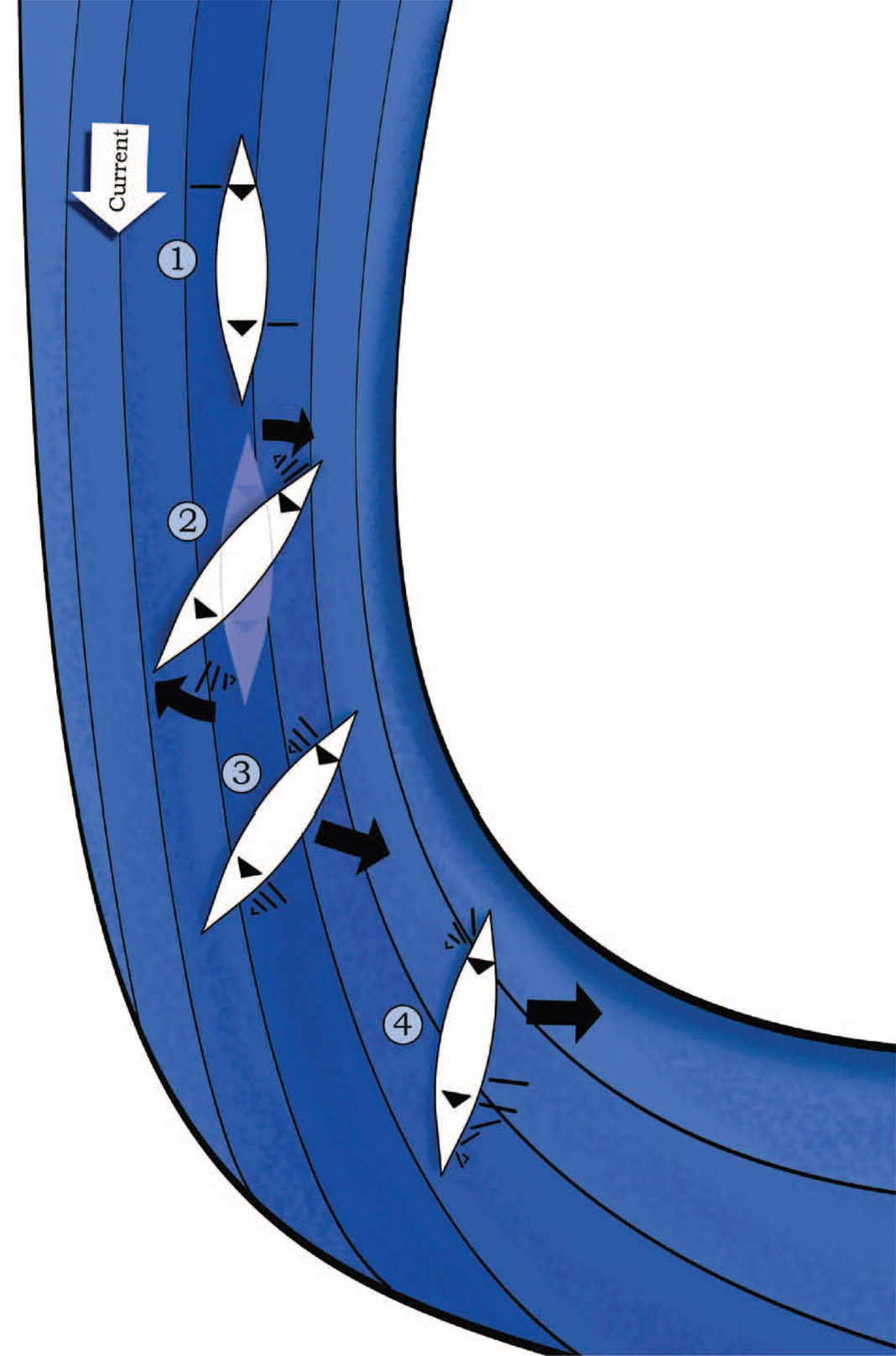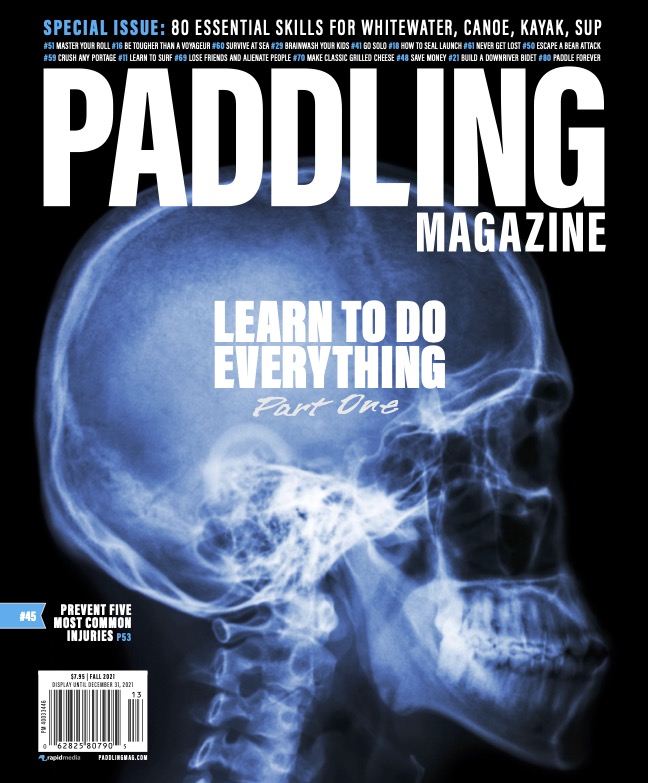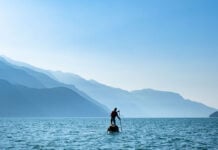The back ferry is a great tool for navigating whitewater in a canoe. Unlike the front ferry where paddlers (or a solo paddler) face upstream and paddle forward, the back ferry has paddlers facing downstream and backpaddling.
Doing so can help you steer around obstacles, slow down so you have more time to pick a route through the rapids, move across the river without moving forward, navigate around bends in the river and more. Read on to learn the mechanics and techniques for back ferrying in tandem and solo canoes.
How to tandem back ferry a canoe
For long whitewater canoe trips, few maneuvers are as handy and versatile as the back ferry. The ability to slow down and move your canoe in a direction other than where the current is pushing you buys you the time and space required to maneuver a heavily loaded tandem canoe that is about as nimble as a freight train.

Keep in mind that on high-gradient rivers, back ferrying may be out of the question because there are likely to be fewer standing waves to assist your ferry and your backpaddling will be no match for the strong current. This maneuver works best on moderate gradient and in moving from fast water to slow water, such as back ferrying to the inside of a corner or into an eddy.

1 Shift your position, if necessary
Before you try to back ferry, make sure the stern of the canoe is not sitting lower than the bow. The stern paddlers can shift forward to the stern thwart is necessary. To start a back ferry, both paddlers need to slow the canoe’s downstream momentum so that it equals the speed of the current.
2 Set the angle
Both bow and stern paddlers use pivot strokes (draws or pries) to set the angle of the canoe so that the stern is pointed in the direction you want to go.
3 Backpaddle
Backpaddle to develop upstream momentum. Before heated discussion or cooling swims occur, note that steering is always easier from the trailing end of the canoe, which is now the bow, but the bow paddler’s visibility of the canoe is limited. Communication between partners is essential.
4a Steering from the bow
While back ferrying, the bow paddler controls the angle with four correction strokes, two major and two minor.
The major correction strokes control angle only and do not generate momentum. The minor correction strokes generate backward momentum with a little correction.
Major correction strokes
Static back-draw: Angle the paddle so the blade is near the bow and push out with your grip hand.
Static cross-draw: Place your paddle in the water as it would be at the end of a cross- draw stroke, blade near the bow, grip hand extended out over the water.
Minor correction strokes
Back-sweep: Arc your paddle toward the bow, pushing with the non-power face.
Reverse J-stroke: A powerful backpaddle stroke with a J at the end.
4b Steering from the stern
During a back ferry, the stern paddler can help to open the angle only, by drawing or prying his end downstream with the current. To close the angle, he would have to pull his end upstream against the current…not going to happen.
Downstream tilt is only necessary when waves cause you to back surf as you cross the river. With practice, these small, assistive back surfs will become your objective during back ferries.
How to solo back ferry a canoe
Even the best solo open boaters face unexpected situations. The ability to maintain control with a few well-placed back strokes is an invaluable skill. Back ferries are a great way to keep an eye on downstream action.
Despite the fact that today’s solo boats are so short you can turn them around in a heartbeat, renowned OC slalom paddler Andy Walker insists that the back ferry is not dead. He suggests using the solo back ferry as “a save-your-ass tool when your boat is loaded with water after you flip and roll up.”
When practicing solo back ferrying, keep it simple. Start in an area that has wide, easy swifts or Class I current. With your boat facing downstream, begin by using any stroke to point your stern in the direction that you want to ferry and then start backpaddling. It’s that easy.
Maintaining a solid, wobble-free boat is most important. It’s okay if your angle into the current is more extreme than you’re used to during a front ferry. The back strokes taught here are strong, and with practice, you’ll find that you can control your angle well and even jet-back ferry.

Essential back ferry strokes
Onside back sweep
Extend your blade well away from the boat and back sweep from your hip to the bow of your canoe. This stroke is easy to learn and very powerful. Extend your reach and use your core muscles for maximum power.
Cross-scoop
Much like a cross draw but with a lower paddle angle. Scoop water up under the bow for an offside correction. When combined with the onside back sweep, you can control the boat’s direction and keep reverse momentum all at once.
Reverse J-stroke
This onside stroke begins with a vertical back stroke. Then rotate the paddle as you move the blade toward the bow and lever off the gunwale with the non-power face of the blade. Your grip thumb should end up pointing at your shoulder.
Other back ferry notes
Be mindful of the importance of reverse momentum. It’s amazing how often people resort to what’s familiar by trying to use their forward or lateral strokes to correct the boat. Ask yourself: Are my strokes helping to propel the boat backward?
Once you’re confident crossing the current in reverse, Walker recommends you try leaving an eddy backward to surf a small wave. “Once you can leave, surf and re-enter an eddy backwards,” he says, “your survival back ferry will be ready for you when you really need it.”
This article originally appeared in Paddling Magazine Issue 65. Subscribe to Paddling Magazine’s print and digital editions here, or download the Paddling Magazine app and browse the digital archives here.
Learn the back ferry and master whitewater canoe tripping. | Feature photo: Destination Ontario









